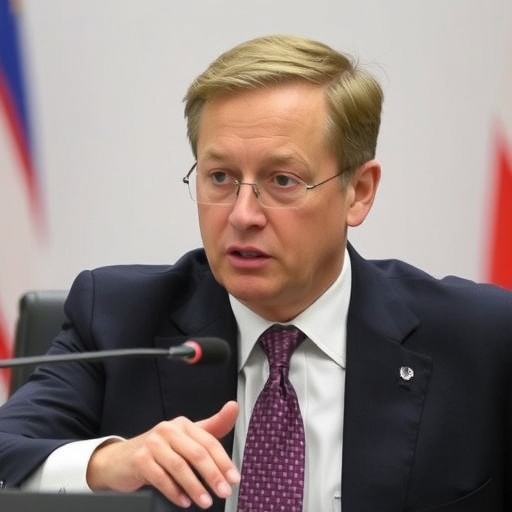Zelensky Pushes for Sweeping US Sanctions on Russian Oil Sector to Cripple Putin’s War Economy
In a bold escalation of diplomatic pressure amid the grinding conflict in Ukraine, President Volodymyr Zelensky has called on the United States to expand its sanctions regime against Russian oil, shifting from targeted measures on specific companies to a blanket crackdown on the entire sector. This plea, delivered during a virtual address to U.S. policymakers on Wednesday, underscores Kyiv’s desperation to starve Moscow’s war machine of its primary revenue stream as Russian forces continue their advances in eastern Ukraine.
Zelensky‘s remarks come at a critical juncture, with Russia reportedly earning over $100 billion from oil exports in the first half of 2023 alone, despite Western sanctions. “The targeted approach is no longer enough,” Zelensky stated emphatically. “We must hit the heart of Russia’s economy—the oil sector—to bring real peace closer.” His words highlight the frustration among Ukrainian leaders, who argue that piecemeal sanctions have allowed Russia to adapt and reroute its energy exports to buyers in Asia and beyond.
The Ukrainian president’s appeal is rooted in the ongoing invasion that began in February 2022, which has devastated Ukraine’s infrastructure and claimed tens of thousands of lives. With U.S. military aid already totaling more than $50 billion, Zelensky is now targeting the economic levers that fund Russia’s military operations. Experts warn that without broader US sanctions, the Kremlin’s resilience could prolong the conflict indefinitely.
Zelensky’s Urgent Plea Echoes from Kyiv’s Frontlines
From the resilient streets of Kyiv, where air raid sirens have become a grim routine, President Zelensky’s voice carries the weight of a nation under siege. In his latest outreach, he detailed how Russia’s oil revenues directly finance the missiles pounding Ukrainian cities and the tanks rolling across Donbas. “Every barrel of Russian oil sold is a bullet fired at our people,” Zelensky declared, invoking vivid imagery to rally international support.
This isn’t the first time Zelensky has turned to Washington for economic warfare tools. Since the invasion’s outset, Ukraine has lobbied for tougher measures, but progress has been incremental. The U.S. Treasury Department imposed sanctions on entities like Rosneft and Gazprom in 2022, capping Russian oil prices at $60 per barrel to limit Moscow’s windfall profits. Yet, as of late 2023, Russia has circumvented these restrictions by selling discounted crude to India and China, with exports hitting 7.5 million barrels per day—near pre-war levels.
Zelensky’s push for sector-wide sanctions would involve prohibiting U.S. firms from insuring, financing, or trading any Russian oil, effectively isolating the industry. He cited internal Ukrainian intelligence suggesting that such a move could slash Russia’s oil income by up to 40%, forcing budget cuts to its $200 billion defense spending. “America has the power to end this nightmare faster,” Zelensky urged, appealing directly to President Biden and Congress.
Behind the rhetoric lies a strategic calculus. Ukraine’s economy has shrunk by 30% since the war began, per World Bank estimates, while Russia’s GDP dipped only 2% in 2022 before rebounding. Zelensky’s team argues that broadening US sanctions could level this playing field, compelling Putin to the negotiating table.
Decoding the Current Web of US Sanctions on Russian Energy
The existing framework of US sanctions against Russia is a complex tapestry, woven since the 2014 annexation of Crimea but intensified post-2022 invasion. Initially focused on individuals and banks, sanctions evolved to target energy exports after Ukraine’s full-scale defense began. The G7’s price cap, enforced by the U.S., aimed to curb revenues without spiking global energy prices—a delicate balance amid inflation fears.
Key measures include bans on importing Russian crude and refined products, effective from 2022, which stripped Moscow of its largest U.S. market. The Treasury’s Office of Foreign Assets Control (OFAC) has blacklisted over 1,200 Russian entities, including major oil producers like Surgutneftegas. Secondary sanctions threaten third-party enablers, such as shipping firms using the “shadow fleet” of tankers to evade scrutiny.
Statistics paint a mixed picture of efficacy. According to the Center for Research on Energy and Clean Air (CREA), Russia’s oil export revenues peaked at $22.8 billion in March 2022 but fell to $13.5 billion by October 2023 due to the cap. However, loopholes persist: Russia has built a parallel insurance system and shifted sales to non-Western buyers, with China absorbing 2 million barrels daily and India 1.5 million.
Zelensky criticizes this as insufficient, pointing to Russia’s $180 billion current account surplus in 2022, largely oil-driven. He advocates for a “full embargo” akin to the EU’s phased-out ban on Russian seaborne oil, which Brussels completed in December 2022. U.S. officials, including Treasury Secretary Janet Yellen, have acknowledged the need for evolution but caution against measures that could boomerang on global supply chains.
- Targeted Hits: Sanctions on specific firms like Novatek, Russia’s largest LNG producer.
- Price Mechanisms: The $60/barrel cap, monitored via satellite tracking of vessels.
- Financial Chokepoints: Restrictions on Western banks dealing in Russian energy transactions.
These tools have bitten, but Zelensky insists a sector-wide net is needed to prevent evasion.
Russia’s Oil Lifeline Fuels Invasion and Evades Western Pressure
At the core of Zelensky’s demand is Russian oil‘s role as the Kremlin’s economic backbone. Pre-war, energy exports accounted for 40% of Russia’s federal budget, funding everything from social programs to the military buildup that enabled the Ukraine assault. In 2023, despite sanctions, oil and gas still generate $300 billion annually, per International Energy Agency data—enough to sustain 1.5 million troops and procure advanced weaponry from allies like Iran and North Korea.
The invasion’s economic toll on Ukraine is staggering: over 8 million displaced, $150 billion in reconstruction costs, and a 2023 GDP forecast of just 2% growth amid blackouts and minefields. Russia’s adaptability, however, is legendary. After losing European markets, which once bought 75% of its seaborne oil, Moscow pivoted east. Exports to Asia surged 50% in 2023, with Urals crude trading at a $15 discount to Brent, still profitable at $70+ global prices.
Internal Russian data, leaked via Ukrainian hacks, reveals oil revenues propping up Putin’s war chest. The 2023 budget allocates 6% of GDP to defense, up from 4% pre-invasion, with oil taxes yielding 8 trillion rubles ($85 billion) in the first nine months. Zelensky highlighted this in his address: “While our cities burn, their oil flows freely. It’s time to turn off the tap.”
Challenges abound. A full sector ban could raise global oil prices by $10-15 per barrel, per Bloomberg estimates, hitting U.S. consumers amid midterm elections. Yet, proponents like U.S. Senator Lindsey Graham argue the moral imperative outweighs short-term pain, tweeting support for Zelensky’s call.
Global Allies Weigh In on Expanding Sanctions Pressure
Zelensky’s appeal resonates beyond Washington, drawing nods from European capitals weary of Russian energy dependence. The EU, having divested 90% of its Russian oil imports, leads with its own sector-wide measures, including a coal ban and upcoming gas restrictions. Ursula von der Leyen, European Commission President, echoed Zelensky: “Coordinated action with the U.S. can break Russia’s resolve.”
In Asia, reactions are mixed. India, now Russia’s top oil buyer, defends its purchases as economically vital, importing 1.8 million barrels daily at discounts that save billions. Chinese state media, meanwhile, frames sanctions as Western aggression, underscoring Beijing’s unwavering support for Moscow.
U.S. domestic voices are divided. Progressive Democrats like Senator Bernie Sanders warn of inflationary risks, while hawks in the GOP push for maximal pressure. Think tanks such as the Atlantic Council advocate for “sanctions 2.0,” including tech export bans on Russian drilling equipment to degrade long-term production capacity.
Quotes from experts bolster the case. Meghan O’Sullivan, Harvard energy policy professor, told Reuters: “Broadening to the entire Russian oil sector could reduce revenues by $50 billion yearly, forcing Putin to choose between guns and butter.” On the flip side, former ExxonMobil CEO Rex Tillerson cautioned against overreach, citing potential supply disruptions.
- EU Solidarity: Phased bans inspiring U.S. action.
- Asian Neutrality: India’s balancing act complicates enforcement.
- U.S. Bipartisan Debate: Calls for unity amid election-year politics.
This international chorus amplifies Zelensky’s message, signaling potential for a unified front.
Path Forward: What Broader Sanctions Could Mean for Ukraine’s Fight
Looking ahead, Zelensky’s push for expanded US sanctions on the Russian oil sector could reshape the conflict’s trajectory. If implemented, analysts predict a 20-30% drop in Russia’s export volumes within months, straining its $600 billion foreign reserves and accelerating ruble depreciation. This economic squeeze might compel concessions in peace talks, such as territorial withdrawals from Kherson and Zaporizhzhia.
For Ukraine, the stakes are existential. With winter approaching and Russian strikes on energy grids intensifying, broader sanctions could fund more Western arms, including F-16 jets pledged by NATO allies. Kyiv’s foreign minister, Dmytro Kuleba, hinted at reciprocal measures, like targeting Russian shadow fleet ports in third countries.
Yet, implementation hurdles loom. The U.S. would need Congressional buy-in, possibly via the upcoming National Defense Authorization Act. Biden administration officials signal openness, with National Security Advisor Jake Sullivan stating, “We’re constantly reviewing sanctions to maximize impact on Russia’s aggression.”
In the broader geopolitical arena, success could deter aggressors like China eyeing Taiwan, demonstrating economic weapons’ potency. Failure, however, risks emboldening Putin, whose forces recently captured Avdiivka, a key Donbas hub. As Zelensky concludes in his addresses, “The choice is clear: sanction now, or suffer longer.” The world watches as Washington deliberates, with Ukraine’s fate hanging in the balance of black gold.
Monitoring developments, the U.S. Treasury plans consultations with allies in early 2024, potentially unveiling enhanced measures. For now, Zelensky’s call injects urgency into the sanctions debate, reminding all that oil isn’t just fuel—it’s the lifeblood of war.









